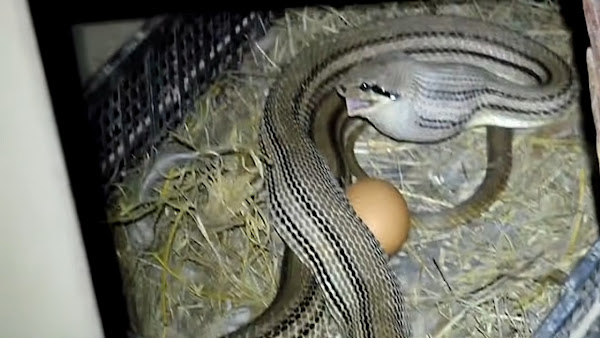The Cervone snake was observed consuming eggs within the confines of the chicken coop. This behavior is of great concern as it poses a significant threat to the productivity of the coop and the welfare of the chickens. It is imperative that measures be taken to prevent further predation by the Cervone snake. Such measures may include the installation of physical barriers or the implementation of predator control strategies. Failure to address this issue may result in significant economic losses and potential harm to the chickens. Therefore, prompt action is necessary to mitigate the impact of the Cervone snake on the chicken coop.
The Cervone snake is an unwelcome guest in the chicken coop. It is a large, non-venomous constrictor snake native to South America. It is also known as the false water cobra. The Cervone snake is an opportunistic feeder that will eat just about anything it can get its mouth around. In the chicken coop, it is attracted to the eggs that the chickens lay. It will enter the coop and consume as many eggs as it can find, leaving the chicken owners with fewer eggs and potentially fewer chicks. The Cervone snake usually preys on small rodents, frogs, lizards, and birds. But when it comes to the chicken coop, eggs are the main course. The snake will enter the coop at night and consume the eggs, quickly and quietly.
The best way to keep the Cervone snake out of the chicken coop is to make sure the coop is secure. All openings should be sealed off, and the coop should be checked regularly for any signs of entry. If the snake is already in the coop, it should be removed as soon as possible. The Cervone snake is a large snake, so it is important to take the necessary precautions when removing it from the coop. It should be handled with care while wearing protective clothing and gloves. If a snake catcher is needed, it is best to contact a professional. The Cervone snake is an unwelcome guest in the chicken coop. It is attracted to the eggs that the chickens lay, and it will consume as many as it can find. The best way to keep the Cervone snake out of the coop is to make sure that it is secure and to remove it if it is already in the coop.
Animals Reunited With Owners After Years !.
Angry dogs vs mirror reaction.
I Survived The 5 Deadliest Places On Earth.










